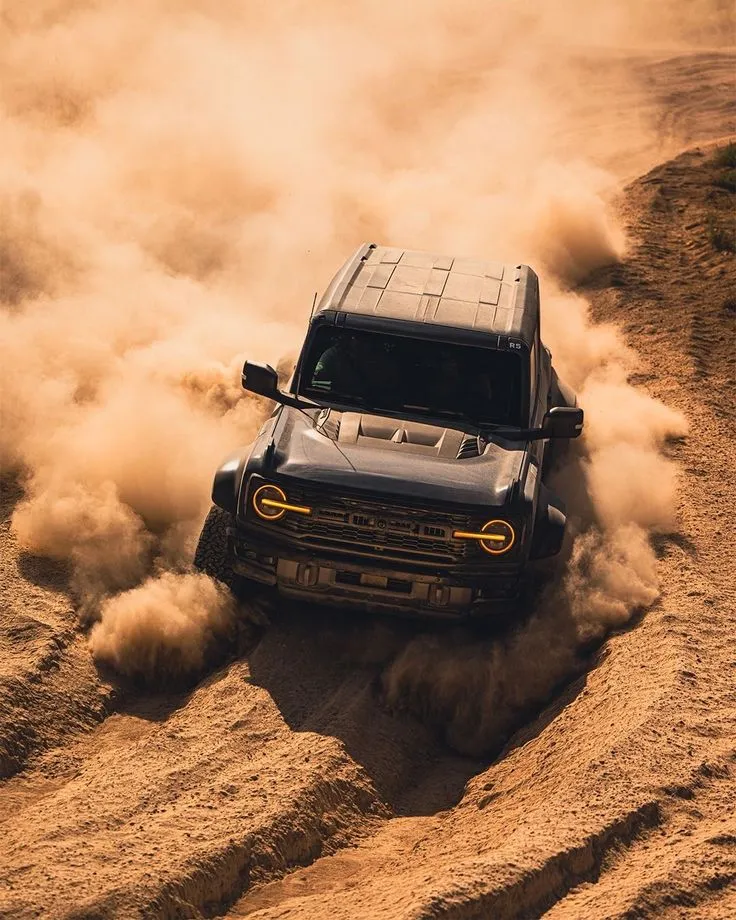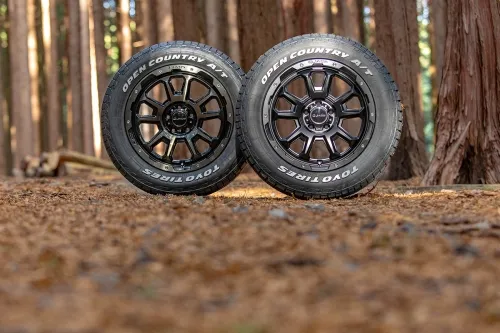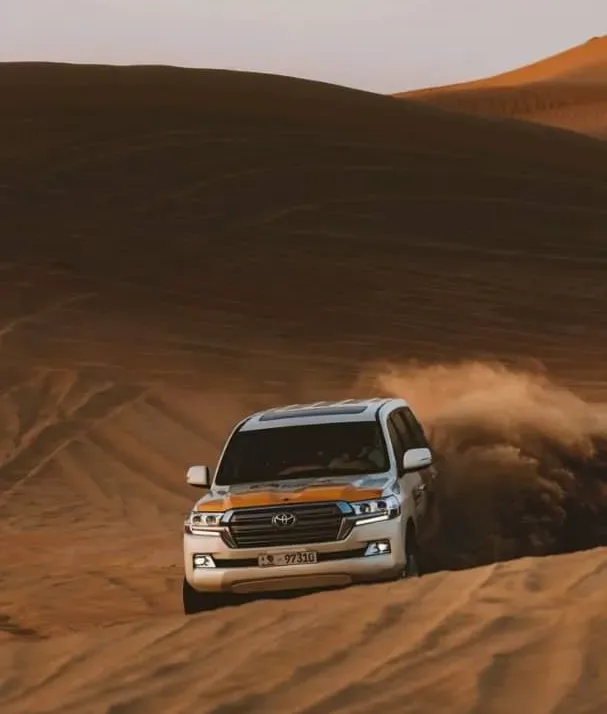Sand defines the soul of Kuwait’s off-road adventure — where endless golden dunes meet the thrill of exploration. Beyond the bustling modern highways filled with SUVs and luxury vehicles lies a vast, untamed world of sand that beckons thrill-seekers to dive into the رمال (rimal) and conquer the صحراء (sahara). For countless drivers, weekend escapes into these sandy expanses aren’t just recreation — they’re a way of life. But one critical decision stands between a seamless ride and a sinking struggle: choosing the right tire for the sand. The wrong choice can leave you stranded; the right one lets you glide, grip, and dominate the dunes with confidence.
Welcome to the ultimate guide to conquering Kuwait’s deserts, one grain at a time. | FormulaWheel
At FormulaWheel, we know that Kuwait’s desert presents unique challenges. From extreme heat to soft shifting sands, you need tires built for performance, safety, and durability. This comprehensive guide (over 2000 words) will explain everything you need to know about selecting the right tires for sand driving, including expert tips, tire types, maintenance advice, and frequently asked questions.
Why Tire Choice Matters in the Kuwaiti Desert
Driving on sand is entirely different from driving on asphalt. Normal street tires are designed for grip on paved surfaces, but in the desert, they often sink, slip, or overheat. The Kuwaiti desert requires tires that are specifically designed for off-road use, with characteristics that allow them to “float” on sand instead of digging in.
Key challenges include:
Soft sands (رمال ناعمة): Regular tires struggle to maintain traction.
High temperatures: Summer heat can exceed 45°C, accelerating tire wear.
Unexpected rocks: Hidden stones can damage weak sidewalls.
Long distances: Once you’re in the desert, support is limited—reliability is essential.
Choosing the wrong tire could mean getting stuck in dunes or even damaging your vehicle. Choosing correctly means confidence, freedom, and unforgettable desert adventures.
Essential Factors When Choosing Tires for Sand Driving
- Tire Width and Contact Patch
On sand, wider is better. Wide tires spread the vehicle’s weight across a larger surface area, reducing the chances of sinking into sand. This phenomenon, known as “flotation,” enables the tire to glide over the sand’s surface instead of burrowing into it. A narrow tire acts like a knife cutting into sand, while a wide tire acts more like a snowshoe, distributing weight evenly.
Unlike rocky trails, sand requires less aggressive tread. Tires with big lugs (like mud tires) tend to dig in and cause resistance. Instead, smoother tread patterns or those designed with paddle-like features help propel the vehicle forward. A proper off-road sand tire almost looks simple compared to aggressive rock tires, but its efficiency on dunes is unmatched.
- Air Pressure Adjustment
Even the finest tire demands careful air pressure management. This phenomenon, known as “flotation,” enables the tire to glide over the sand’s surface instead of burrowing into it. This technique is used by every experienced desert driver in Kuwait. Yet, when transitioning back to asphalt roads, it’s essential to restore tire pressure to the manufacturer’s specified level to prevent damage.
- Sidewall Strength
Desert driving often involves hidden rocks under the sand. Strong sidewalls protect against punctures and allow lower air pressures without risking tire collapse. Reinforced or multi-ply sidewalls are ideal for desert use.
Kuwait’s summer is unforgiving. Tires must be manufactured with heat-resistant compounds to prevent cracking, melting, or premature wear. Always check tire ratings for temperature endurance before purchasing.
Types of Off-Road Tires Suitable for Kuwait
- All-Terrain (A/T) Tires
These are versatile, suitable for both city roads and moderate desert driving. They provide a well-rounded performance, perfectly suited for drivers who alternate between cruising highways and tackling dunes. However, they may not provide maximum flotation on soft sand.
- Mud-Terrain (M/T) Tires
M/T tires are designed with aggressive patterns for mud and rocks. While they are excellent for rocky parts of the desert, they can dig into sand, making them less effective on Kuwait’s soft dunes. Still, they’re useful for mixed conditions.
- Sand-Specific Tires
These are specially engineered for desert performance. They are wide, lightweight, and feature minimal tread, designed for maximum flotation on رمال. If tearing through dunes fuels your thrill, sand-specialized tires are your ultimate pick.
- Highway-Terrain (H/T) Tires – Not Recommended
H/T tires are designed for city driving. Using them in the desert risks overheating, sinking, and punctures. They should not be used for off-road adventures.
How to Prepare for Sand Driving in Kuwait
-
Adjusting Tire Pressure
As mentioned, air pressure is key. Always carry a portable compressor and gauge. Lower pressure for dunes, reinflate for highways. Ignoring this can diminish tire longevity and compromise safety.
- Essential Gear
- Recovery boards
- Shovel
- Tow rope
- Air compressor
- Spare tire
Driving Techniques
- Maintain momentum. Stopping suddenly can cause sinking.
- Avoid sharp turns at high speed.
- Follow existing tracks when possible, as the sand there is already compacted.
- Drive smoothly; aggressive acceleration can dig you in.
Safety Considerations
- Inspect tires before each journey: Examine for splits, gashes, or irregular tread wear.
- Travel with company: Don’t go into the desert alone.
- Carry extra water and fuel: Desert trips can be unpredictable.
- Know your vehicle: Some SUVs and trucks handle sand better than others.
FormulaWheel: Your Partner in Off-Road Adventures
At FormulaWheel, we provide a curated selection of high-quality off-road tires designed specifically for Kuwait’s desert environment. Our inventory includes international brands trusted by professional desert drivers.
We offer:
- Professional guidance to pair the perfect tire with your specific requirements
- Professional installation and balancing
- Seasonal offers and promotions
- After-sales support to maximize tire life
Whether you want to explore the صحراء الكويتية (Kuwaiti desert), go dune-bashing with friends, or simply need reliable tires for your SUV, FormulaWheel has you covered.
Expert Tips for Maximizing Tire Life on Sand
- Rotate tires regularly to ensure even wear.
- Clean tires after desert trips—sand can get trapped in treads.
- Avoid overloading your vehicle; excess weight increases sinking.
- Store tires correctly—extreme heat and direct sunlight can degrade rubber.
Conclusion
Driving across the sands and رمال of Kuwait offers an exhilarating experience that bridges the gap between contemporary motoring and the enduring essence of the desert. This adventure, however, requires careful preparation, honed skills, and the right equipment to ensure safety and enjoyment. Selecting the appropriate off-road tires is crucial; factors such as tire width, tread pattern, durability, and heat resistance play significant roles in your vehicle’s performance on challenging terrain.
To navigate the desert with confidence, it’s essential to equip your vehicle with tires that can withstand the rigors of off-road driving. Whether conquering soft dunes or jagged paths, the proper tires will enhance your grip and stability, enabling you to dive headfirst into the exhilarating adventure that awaits.
For those seeking expert guidance and a top-notch selection of off-road tires in Kuwait, look no further than FormulaWheel. Their expert team can guide you in selecting the ideal tires customized to your unique requirements. Remember, your desert adventure starts with a solid foundation—your tires. Equip yourself wisely, and get ready to explore the breathtaking landscapes of Kuwait!
Frequently Asked Questions (FAQ)
- What tire pressure is best for driving on Kuwait’s sand dunes?
Most drivers lower their pressure to 15–20 psi for maximum traction on soft sand. Always reinflate before returning to highways. - Are all-terrain tires enough for sand driving?
Yes, for moderate sand driving. But if you plan serious dune-bashing, sand-specific tires perform better. - Can I use my highway tires for occasional desert trips?
It is not recommended. Highway tires lack flotation, heat resistance, and durability for desert conditions. - How often should I replace off-road tires in Kuwait?
With proper care, off-road tires can last 3–5 years. However, extreme heat may shorten lifespan. Regular inspections are essential. - What distinguishes mud-terrain tires from those designed specifically for sand?
Mud-terrain tires have aggressive treads that dig into mud and rocks, while sand tires are smoother and designed to float on رمال. - Why choose FormulaWheel over other suppliers?
FormulaWheel specializes in tires tailored for Kuwait’s desert conditions, with expert staff, top brands, and reliable after-sales service.




